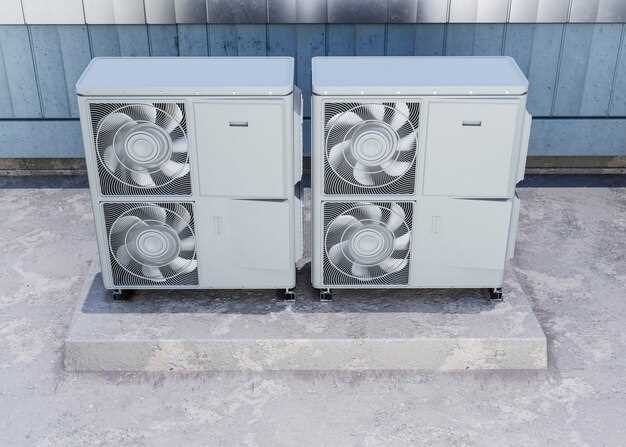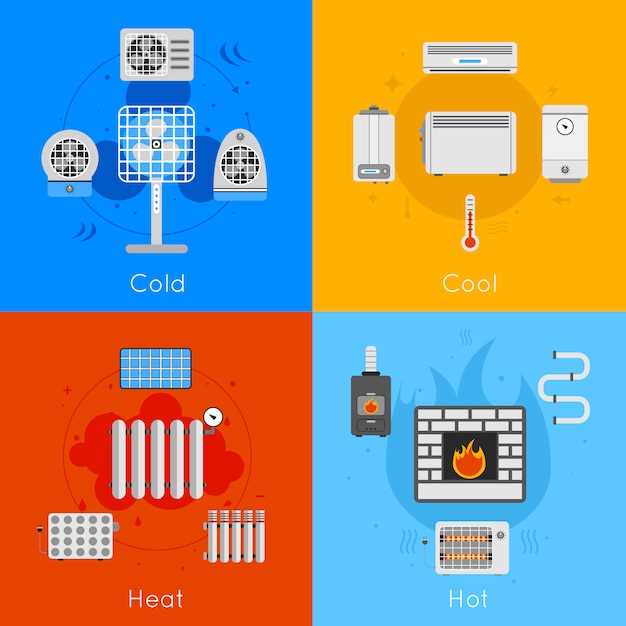

Maintaining your condenser and evaporator is crucial for the efficient operation of any HVAC system. These components play a vital role in the refrigeration cycle, and their proper functioning can significantly impact energy consumption, cooling efficiency, and overall system longevity. Regular maintenance not only ensures optimal performance but also helps in preventing costly breakdowns and repairs.
The condenser is responsible for expelling heat absorbed from the indoor environment, while the evaporator is essential for absorbing heat, providing the cooling effect we rely on in our homes and workplaces. Neglecting these components can lead to a myriad of problems, including decreased efficiency, increased energy bills, and even complete system failure.
In this article, we will discuss effective maintenance practices for both the condenser and evaporator. From routine inspections to cleaning techniques, we will cover the essential steps you need to take to ensure these components function optimally. By following these guidelines, you can extend the lifespan of your HVAC system and maintain a comfortable indoor climate.
Cleaning Techniques for Your Condenser Coils
Maintaining clean condenser coils is essential for ensuring optimal performance and longevity of your HVAC system. Dirt and debris can accumulate on the coils, impacting their efficiency and causing the evaporator to work harder to cool the air. Here are effective cleaning techniques to keep your condenser coils in top condition.
1. Inspect the Coils
Before starting the cleaning process, visually inspect the condenser coils for any visible dirt, rust, or corrosion. Identify areas that require more attention and take note of any damage that may need professional repair.
2. Turn Off Power
Always turn off the power to your HVAC system before attempting any cleaning. This is a critical safety step to prevent electrical shock and ensure safe operation during maintenance.
3. Remove Loose Debris
Using a soft brush or a vacuum with a brush attachment, gently remove loose debris from the surface of the condenser coils. Be cautious not to bend or damage the fins, as this can reduce the efficiency of the coils.
4. Clean with Water
For more stubborn dirt, use a garden hose to spray the coils with water. Start from the top and work your way down to ensure dirt is washed away effectively. Avoid using high pressure, as this can bend the fins and cause damage.
5. Use a Coil Cleaner
If the coils are heavily soiled, consider using a commercial coil cleaner. Apply the cleaner according to the manufacturer’s instructions and allow it to sit for the recommended time to break down grime. Rinse thoroughly with water afterward.
6. Check for Blockages
Ensure that the area around the condenser unit is clear of obstructions. Leaves, grass, and other debris can block airflow, which undermines the efficiency of both the condenser and evaporator. Clear away any buildup around the unit.
7. Regular Maintenance
Establish a regular cleaning schedule, ideally at least twice a year. Regular maintenance can significantly improve the efficiency of your HVAC system and prevent issues related to dirty coils. Keeping both the condenser and evaporator clean will ensure optimal performance and longevity of your system.
Identifying and Troubleshooting Common Evaporator Issues

The evaporator is a crucial component in the refrigeration cycle, responsible for absorbing heat from the environment and providing necessary cooling. However, like any mechanical system, it can experience various issues over time. Identifying these problems early is vital for maintaining optimal performance.
One common issue is ice buildup on the evaporator coils. This can occur due to low airflow, refrigerant issues, or high humidity levels. First, inspect the air filter and replace it if it is dirty. Next, check the blower fan and ensure it is functioning properly to promote adequate airflow. If problems persist, examine the refrigerant levels; low levels can lead to inefficient cooling and ice formation.
Another frequent problem is a refrigerant leak, which can be identified by low cooling performance and hissing sounds near the evaporator unit. To troubleshoot, inspect the coils and connections for any visible signs of damage. Utilizing a leak detection solution can help pinpoint hidden leaks. If a leak is found, it’s essential to repair it before recharging the system with refrigerant to ensure efficient operation.
Additionally, inadequate drainage can cause water pooling around the evaporator. Clogged drain lines are often the culprit. Check the drain line for obstructions and clean it if necessary. Ensuring that the condensate pump is operational can also help prevent overflow issues, as a malfunctioning pump can lead to water accumulation.
Noise coming from the evaporator can indicate a mechanical issue, potentially involving the blower motor or fan blades. Listen closely for any unusual sounds and check the fan for debris or damage. If the blower motor is noisy, it may need lubrication or replacement to restore quiet operation.
Lastly, inconsistent cooling can signal various underlying problems. Perform a thorough inspection of the entire system, including the condenser unit, which can affect the evaporator’s efficiency. Ensure that the condenser coils are clean and free from debris, allowing for optimal heat exchange between the two components.
By promptly identifying and addressing these common evaporator issues, you can significantly enhance the performance and longevity of your cooling system and ensure a comfortable environment.
Seasonal Maintenance Checklist for Both Components

Regular maintenance of both the condenser and evaporator is crucial for optimal performance and efficiency. Here’s a seasonal checklist to ensure these components operate smoothly throughout the year:
1. Clean the Condenser Coils: Remove debris, dust, and dirt from the condenser coils using a soft brush or vacuum. This prevents overheating and maintains efficient heat exchange.
2. Inspect the Condenser Fan: Check the fan for any signs of wear or damage. Ensure it operates quietly and without obstruction. Lubricate motor bearings if applicable.
3. Check Refrigerant Levels: Monitor the refrigerant levels in the condenser. Low levels can indicate leaks, which must be repaired to ensure proper cooling.
4. Clean the Evaporator Coils: Dust and dirt can also accumulate on evaporator coils, reducing efficiency. Use a cleaner specifically designed for evaporators to ensure effective cleaning.
5. Inspect the Drain Line: Check the evaporator drain line for clogs and clean it as necessary. A blocked drain can lead to water damage and mold growth.
6. Verify Insulation: Ensure that insulation around the evaporator coils and refrigerant lines is intact. Damaged insulation can lead to energy loss and reduced efficiency.
7. Test Thermostat and Controls: Ensure the thermostat is functioning correctly by testing various temperature settings. Make adjustments as necessary for accurate temperature control.
8. Examine Ductwork: Inspect duct connections for any leaks, especially near the evaporator. Sealing leaks can significantly improve system efficiency.
9. Schedule Professional Inspection: At least once a year, have a professional technician inspect both components to catch any potential issues early and ensure they operate at peak performance.
Following this seasonal maintenance checklist for the condenser and evaporator can help extend their lifespan and improve overall system efficiency, leading to lower energy costs and enhanced comfort in your space.






